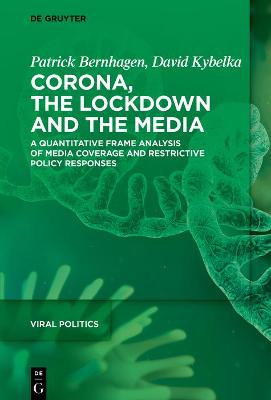In a pilot study, Bernhagen and Kybelka used supervised machine learning to retrieve and classify news reporting in France, Germany and the UK on the first wave of the COVID-19 pandemic. To analyze the framing in the media reports, they distinguish a human impact frame from an economic consequences frame. The first focuses primarily on the direct personal consequences of the pandemic, such as severe symptoms and loss of life. The second frame draws attention to the economic fallout of both the pandemic and the public policy measures implemented to contain it. The authors test the model empirically using data from the Oxford COVID-19 Government Response Tracker and data from British, French, and German newspaper articles on the pandemic.
A comparison of the distribution of the frames between the three countries has shown, firstly, that the human impact frame is dominant in all three countries, while the economic consequences frame is particularly frequent in France. Controlling for effects of infection and death rates, the findings from the pilot study suggest a positive influence of media reporting employing the human impact frame on subsequent restrictive regulations in Germany. By contrast, neither the human impact frame nor the economic consequences frame served to predict policy change in France or the United Kingdom. The authors model the relationship between the pandemic, public opinion, policy responses and media reporting and test the model using data from France, Germany and the UK.
Corona, the Lockdown and the Media: A Quantitative Frame Analysis of Media Coverage and Restrictive Policy Responses will form the basis of future research and action by policy-makers.
- ISBN10 3110765209
- ISBN13 9783110765205
- Publish Date 15 August 2022
- Publish Status Forthcoming
- Publish Country DE
- Imprint De Gruyter
- Format Hardcover
- Pages 160
- Language English
- URL https://degruyter.com/isbn/9783110765205
